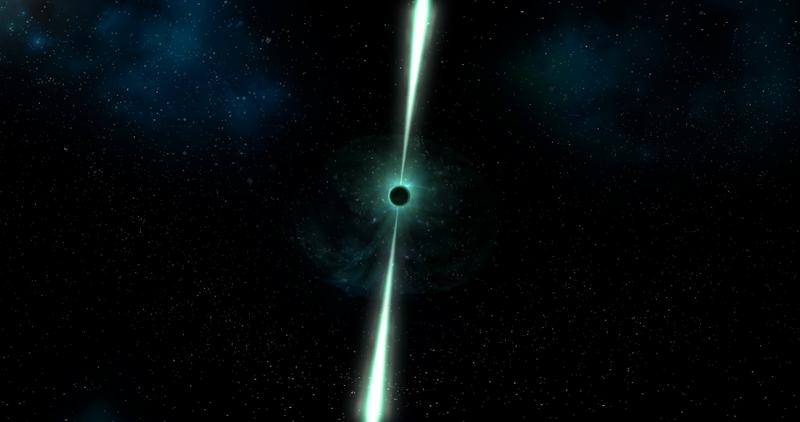A "Black Widow" 6500 light-years from Earth
A "Black Widow" 6500 light-years from Earth
A team of astronomers has performed one of the highest resolution observations in history by detecting two intense regions of radiation, 20 kilometres apart, around a star 6500 light-years away.
The observation is equal to having a telescope on Earth to observe a flea on the surface of Pluto.
The outstanding observation was made possible by the rare geometry and characteristics of a pair of stars orbiting each other. One is a cool, lightweight star known as a brown dwarf, which features a”wake” or comet-like tail of gas. Another is an exotic, fast spinning star called a pulsar.
“The gas is acting as like a magnifying glass right in front of the pulsar,” states Robert Main, lead author of the paper describing the observation being published May 24 in the journal Character. “We are essentially looking at the pulsar through a naturally occurring magnifier which periodically allows us to see the two regions separately.”
Main is currently a PhD astronomy student in the Department of Astronomy & Astrophysics at the University of Toronto, working together with colleagues at the University of Toronto’s Dunlap Institute for Astronomy & Astrophysics and Canadian Institute for Theoretical Astrophysics, and the Perimeter Institute.
The pulsar is a neutron star that rotates rapidly – over 600 times a second. Since the pulsar spins, it emits beams of radiation in the two hotspots on its surface. The extreme regions of radiation observed are connected with the beams.
The brown dwarf star is roughly a third the diameter of the Sun. It’s approximately two million kilometres from the pulsar – or five times the distance between the Earth and the moon – and orbits around it in just over 9 hours. The dwarf companion star is tidally locked to the pulsar so that one side always faces its pulsating companion, the way in which the moon is tidally locked to the Earth.
As it’s so near the pulsar, the brown dwarf star is blasted by the powerful radiation coming from its smaller companion. The radiation from the pulsar heats one side of the relatively cool dwarf star to the warmth of the Sun, or some 6000°C.
The blast from the pulsar could ultimately spell its companion’s demise. Pulsars in these kinds of binary systems are known as “black widow” pulsars. As a black widow spider eats its partner, it’s believed that the pulsar, provided the right conditions, could gradually erode gas from the dwarf star before the latter is absorbed.
Along with having an observation of exceptionally large resolution, the result might be a hint to the character of mysterious phenomena called Fast Radio Bursts, or FRBs.
“Many observed properties of FRBs could be explained if they are being amplified by plasma lenses,” stated Main. “The properties of the amplified pulses we detected in our study show a remarkable similarity to the bursts from the repeating FRB, suggesting that the repeating FRB may be lensed by plasma in its host galaxy.”
Journal Reference:
- Robert Main, I-Sheng Yang, Victor Chan, Dongzi Li, Fang Xi Lin, Nikhil Mahajan, Ue-Li Pen, Keith Vanderlinde, Marten H. van Kerkwijk. Pulsar emission amplified and solved by plasma lensing within an eclipsing binary. Character, 2018; 557 (7706): 522 DOI: 10.1038/s41586-018-0133-z
Be the first to post a message!
